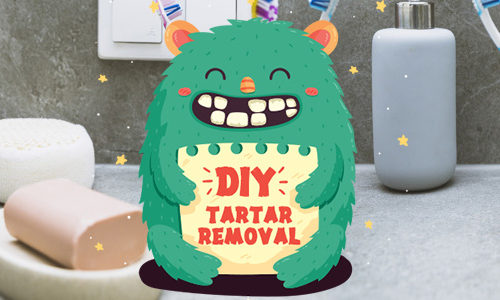
What is RDA Value in Toothpaste?
This article is a part of our Q&A series in which we give detailed answers to our readers' questions. Have a question? Don't hesitate and send it to us to get a detailed answer!
When it comes to dental hygiene, toothpaste is an indispensable tool. With countless options lining the shelves, choosing the right toothpaste can be a daunting task. Among the various factors to consider, the Relative Dentin Abrasivity (RDA) value is a critical aspect that is often overlooked. This article provides an in-depth understanding of RDA and its significance in selecting the appropriate toothpaste for your dental health.
RDA Value meaning
RDA Value applies to every toothpaste which obviously is a dental hygiene product that, in combination with a toothbrush, helps to clean and maintain the health of teeth. It typically consists of abrasives, fluoride, surfactants, flavors, and other ingredients to optimize oral health.
Relative Dentin Abrasivity (RDA) is a standard measure of the abrasive effect of toothpaste on tooth surfaces, particularly dentin. It essentially tells you how harsh or abrasive the toothpaste is, which is important because highly abrasive toothpaste can wear down tooth enamel over time.
RDA is measured on a scale where the higher the RDA value, the more abrasive the toothpaste. For example, toothpaste with an RDA value of 250 is more abrasive than one with an RDA value of 100.
Ever wondered: What is RDA value of my toothpaste? Getting this answer may be a lot more complicated than you think! Every toothpaste has some RDA value, but the tricky part is that this value is rarely presented on the package or a website of the product!
Why RDA Matters
The enamel is the outermost layer of your teeth and serves as a shield against decay. Maintaining its integrity is essential for oral health. Highly abrasive toothpastes may clean stains effectively but can also wear down the enamel. If the enamel is worn down excessively, the dentin (the inner layer) becomes exposed, which can lead to tooth sensitivity and make the teeth more prone to cavities.
What RDA Values Should You Aim For?
The American Dental Association (ADA) recommends using toothpaste with an RDA value of 250 or less. Toothpaste in the range of 0-70 is often considered as low abrasive, 70-100 as medium abrasive, 100-150 as highly abrasive, and 150-250 as regarded as very highly abrasive.
For individuals with sensitive teeth or at high risk of erosion, lower RDA values are generally recommended.
Our recommendation
In case of no problems with teeth staining our advice is simple: the lower the RDA, the better. Simple as that.
Other Factors to Consider When Choosing Toothpaste
While RDA is an important factor, it is not the only one to consider.
Here are some other considerations:
- Fluoride or Hydroxyapatite Content: Fluoride or HAp help strengthen tooth enamel and prevent decay.
- Tartar Control: Some toothpaste contains ingredients to help reduce the buildup of tartar.
- For Sensitive Teeth: Special toothpaste for sensitive teeth can help reduce pain associated with tooth sensitivity. These are usually low RDA toothpastes.
- Whitening Properties: Whitening toothpaste can help remove surface stains on the teeth. These are usually high RDA toothpastes and should be used with caution!
- ADA Seal: Toothpaste that carries the ADA Seal of Acceptance has been evaluated for safety and efficacy.
Tips for Using Toothpaste Effectively
- Use the Right Amount: A pea-sized amount of toothpaste is sufficient
- Brush Gently: Avoid brushing too hard, as this can contribute to enamel wear
- Regular Dental Checkups: Visit your dentist regularly for professional advice on oral hygiene
Bottom Line
The RDA value of toothpaste is a crucial factor in making an informed choice for maintaining oral health. Opting for a toothpaste with an appropriate RDA value, along with considering other features such as fluoride content and specific needs like sensitivity or whitening, can contribute to long-term dental health. Always consult your dentist for personalized advice on selecting toothpaste and maintaining optimal oral hygiene.
This Q&A series article is complete and was published on July 29, 2023, and last updated on July 29, 2023.




